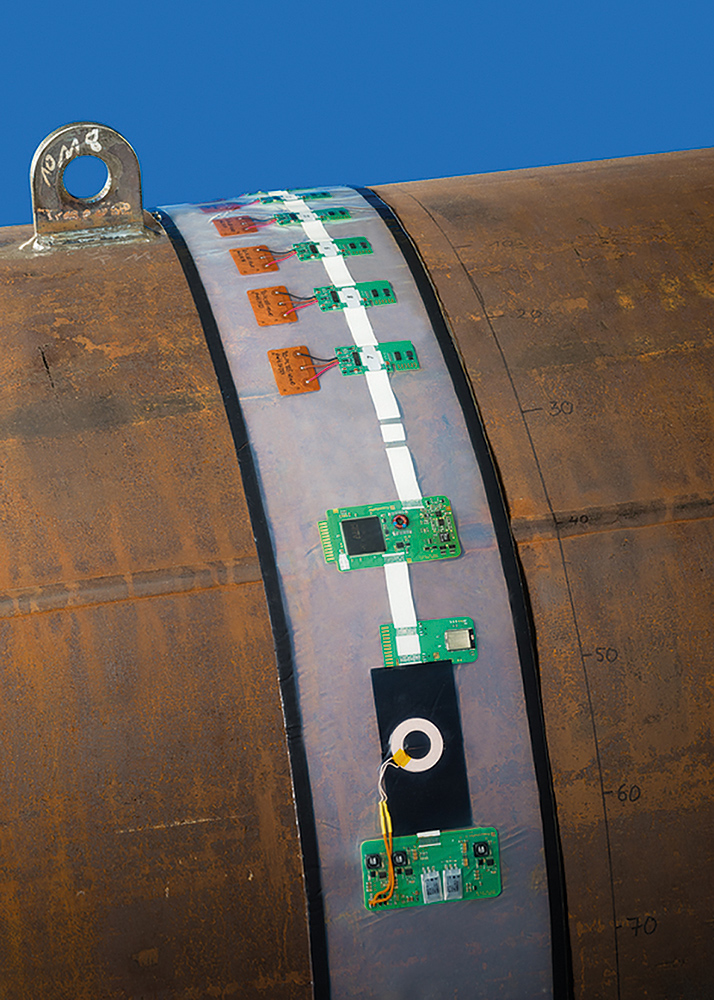
Wireless sensor systems for safe offshore structures – CoMoBelt®
Current research



Wind turbines in offshore wind parks are an alternative to onshore wind power generation – but offshore energy generation is currently still significantly more expensive than onshore. This is due to higher maintenance costs, among other factors. Above all, testing the metal tube construction, known as foundation structures on the seabed, is time-consuming and dangerous. Technicians and material have to be brought to the plant with vessels to perform maintenance tasks. Transport and underwater operations require suitable weather conditions, which occur only on a few days per year. In addition, the costs for ship rental and diving are very high.
With its CoMoBelt® sensor collar, IKTS has developed a measuring system that is installed permanently on the foundation structure of offshore wind turbines and can monitor their integrity. Continuously reducing the need for cost-intensive on-site operations, and thus cutting down on maintenance costs. Similar to a ring, the sensor collar is attached directly and permanently to heavily loaded areas of foundation structures, such as welded seams. This minimizes the effect of external biomaterial growth on the measurements and becomes void strenuous and time-consuming manual cleaning of the measuring points by divers.
Ultrasonic transducers are integrated in the CoMoBelt® monitoring system and act alternately as sensors or actuators. As ultrasonic waves propagate in the object to be monitored, scattering and reflections occur as a result of material damage. These can be used to detect failures, such as weld seam cracks, by using integrated signal processing.
In addition to biomaterial, corrosive salt water and the enormous forces of the waves also pose a threat to sensory measuring systems. In order to be able to permanently measure under water, the sensor ring must withstand the harsh environmental conditions. For this reason, the sensors are sealed by lamination and thus reliably protected by the barrier layers against seawater penetration. This requires flat electronic components specially developed for this purpose.
Energy supply for the piezoceramic transducers and read-out of the data measured with the CoMoBelt® is no longer done by divers, but by “Remote Operating Vehicles” (ROV) – underwater robots controlled remotely by cable. Using suitable wireless near-field communication, the data is transferred from the sensor collar to the diagnostic device on the robot and then via cable to the technicians on the ship. This new technology completely eliminates the need for plug connections on the measurement system, which contributes significantly to reliability offshore and allows the CoMoBelt® system to be operated with a longer service life and less susceptibility to fail.
Download

Privacy warning
With the click on the play button an external video from www.youtube.com is loaded and started. Your data is possible transferred and stored to third party. Do not start the video if you disagree. Find more about the youtube privacy statement under the following link: https://policies.google.com/privacyRemoteDetect - Automatic monitoring of underwater welds with a Remotely Operated Vehicle (ROV).